|
United States : Illinois
3.0 miles (4.8 km) SW of Clayton, Adams, IL, USA
Approx. altitude: 222 m
(728 ft)
([?] maps: Google MapQuest OpenStreetMap topo aerial ConfluenceNavigator)
Antipode: 40°S 89°E
Accuracy: 5 m (16 ft)
Quality: good
Click on any of the images for the full-sized picture.
| 40°N 91°W (visit #2) |
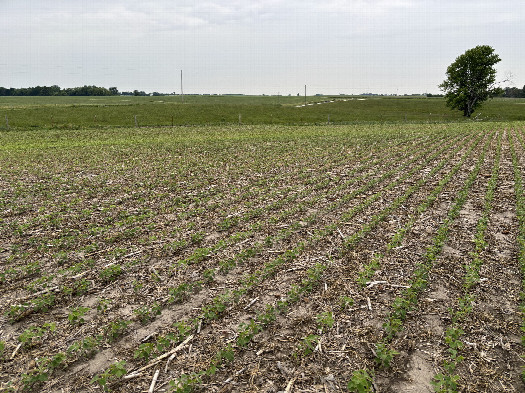 (visited by Joseph Kerski) 25-May-2025 -- As it has been my tradition for the last many years to take an extended weekend over the US Memorial Day holiday to visit railroad depots, abandoned buildings, grain silos, campgrounds, county courthouses, convenience stores, agricultural fields, and confluence points, I had been looking forward to this trip for an entire year. You would think that after 500 points behind me, I would grow tired of this, but not so as a geographer. There was always the attraction of getting out into the field. Finally, the day came. This year, one of my aims was to connect the large number of points forming an oblong shape in the central and western part of the USA with my large shape to the eastern side of the Midwest. Several points between those two shapes would be wonderful if they could be filled in, I thought. There was a reason why I had not visited these points already--they would require some trekking. This filling-in goal dictated the first part of my trek; and the rest were points that I had never visited but were in some of my favorite landscapes, that of Missouri, Kansas, and Illinois. The final statistics of the trip are below. Day 3 of my confluence weekend: After spending the night at a beautiful state park in northeast Missouri, I spent a bit of time at the old style city park in Newark Missouri, enjoying the monkey bars, teeter totter, and metal slide, then departed Missouri by way of the Mississippi River crossing at Quincy. I enjoyed my first time in Quincy and would have liked to stop but my goal today was four confluence points. Now I found myself heading east on US 24. After a stop at one of my favorite convenience stores, Casey's, I drove on some fairly rough but passable gravel roads, eventually heading south on E 2650th Street. From my decades of work with GIS I knew that these road names came about largely due to E 911 systems, converting unnamed roads to a system where emergency responders and others could find via maps in a digital geodatabase. These made for rather sterile names such as E 2650th St but served their purpose. So far this weekend, I visited several points that were a lot more difficult than I thought they would be… This one was exactly as I expected - quite easy, and would prove to be the easiest of the entire trip. I stopped on the road and walked to the house to the northeast of the confluence point, landowner permission letter in hand. After a nice chat with the landowner, I set out back down the driveway, walked about three football fields to the south, and then very gingerly walked into the field planted with soybeans to the southeast. I reached the confluence point about 10 minutes later, walking very slowly to avoid stepping on any plants. It was late morning in late spring, calm but cloudy skies and cool for this time of year temperature of about 74° F. It was very lightly raining and completely overcast but fortunately no thunderstorms existed at present. This was one of the more peaceful points I have ever visited, after over 500 points visited worldwide over 25 years. The land slopes is ever so gently rolling but is largely flat. There are only a few houses visible from this point. I saw only a few birds, no people, and no animals. I reflected that it had been 24 years since the last visit, though certainly the landowner had been here planting and harvesting each season and the Indigenous People traversing the area for centuries before that. I took pictures but no doubt looking disheveled as I had slept for the entire weekend's nights in a rental car, but it was all part of the adventure! I posted this video 40 North Latitude, 91 West Longitude. I now have a very nice collection of confluence points in Illinois spanning 25 years of visits but had not visited a point in the state in a few years. There are only a few points in the entire state that I have not visited. It was grand to be on the 40th Parallel again. I have stood on 40° north latitude in many places from California on the west all the way east to New Jersey and then over to Spain. I have also stood on 91° West on the north end in Wisconsin (many times in that state) all the way down along 91° west to Louisiana on the south end. These points cover an amazingly wide range of landforms, climate zones, and vegetation types. Wanting to be respectful of the landowner's gracious permission, I was on site for only 10 minutes. I then walked back the way I came in, careful not to step on any plants. Wearing my Map This shirt, I paused at the road, taking a few more photos. I then departed the area, traveling north and then east through some wonderful towns en route to 40 North 89 West. I had to skip 40/90 as I had already been there about 10 years ago. With this visit I have an unbroken string along 40 West from a point east of here at 90 West all the way to 109 West, spanning Missouri, Kansas, and Colorado in their entireties. This is thus 19 degrees of longitude, or 20 points, or 1200 mi (over 1900 km) in total span. They cover from the Corn Belt on the Great Plains to the canyons and buttes of Colorado-Utah. As I traveled I reflected on my chats with the four landowners so far this weekend--two on Day 1, one on Day 2, and now, one on Day 3. I do love learning from and talking with people who are our land stewards. Onward with gratitude! When the trip was all said and done, here are the final statistics:
-------------------------------------------------
Days set aside to visit points: 4 + 1 evening.
Confluence points attempted: 13.
Confluence points successfully visited: 13.
Points where I met the local landowner = 5 of 13 points.
Points where I met the local dogs = 2 of 13 points.
Miles = 2547, Kilometers = 4099.
Percent of travel on interstate highways: 25%
Percent of travel on US, state, and county roads: 75 % :-)
Campgrounds = 4.
Windy confluence points: 4 of 13.
Rainy confluence points: 4 of 13.
Beautiful confluence points: 13 of 13.
Convenience store stops = 8.
Points that turned out to be
easier than I thought they would be = 1
about the same as I expected them to be = 4
more difficult than I thought they would be = 8
-------------------------------------------------------
13 points.
Points in woodlands 2
in non-tilled fields 4
in agricultural fields 7
-----------------------------------
13 points.
Points along 42 North = 2
41 North = 1
40 North = 5
39 North = 3
38 North = 1
37 North = 1
----------------
13 points.
Points visited on Day 1 = 4
Day 2 = 4
Day 3 = 4
Day 4 = 1
-------------------
13 points.
Points visited in the morning = 5
afternoon = 5
evening = 3
-------------------------------
13 points
Points visited in Nebraska = 3
Kansas = 2
Missouri = 5
Illinois = 3
-------------------------------
13 points
The most frequently visited longitude line:
--------------------------------------------
92 West: 3 points.
2nd most frequently visited longitude line:
---------------------------------------------
89 West and 99 West: 2 points each.
Get out there and explore! |
| All pictures |
| #1: The confluence lies in the foreground of this view toward the south west. #2: A view to the north from the confluence site. #3: A view to the east from the confluence point. #4: A view to the south from the confluence point. #5: A view to the west from the confluence point. #6: GPS reading at the confluence point. #7: Joseph Kerski with mapping shirt at confluence point. #8: The ground cover at the confluence point. #9: Nearest road to the confluence point. #10: Feeling centered near the confluence point. ALL: All pictures on one page |



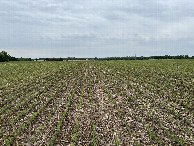

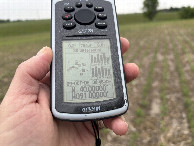
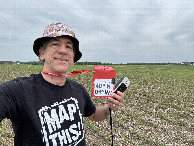
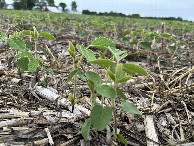

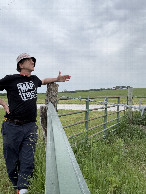
![Visit #1: [31-Mar-01] Visit #1: [31-Mar-01]](/us/il/n40w091/preview.jpg)